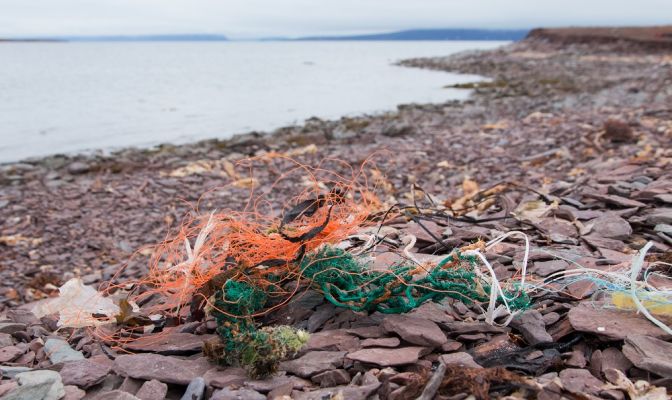Negative effects of dolly rope
Lost at sea
Depending on the type of fishery, the type of seabed (sand/clay/stones/rock) and the size of the net, bottom trawling fishing vessel owners purchase between 325 and 3500 kilograms annually. Due to wear and tear and maintenance work, it is estimated that around 50% of this amount is lost at sea. The total annual amount of dolly rope being purchased by European fishermen is not known, but should be at least 130-170.000 kilograms, as this is the combined amount purchased in The Netherlands and Belgium, for which data is known.
The estimated loss of dolly rope threads in European waters is therefore estimated to be at the very least 65.000 kilograms, but expected to be substantially higher since data from other countries is not available.
Beach-monitoring data from Europe confirm this problem. Dolly rope is one of the most common types of marine litter found on beaches around the North Sea, averaging up to a registered 100 pieces of dolly rope per 100 meters of examined shoreline.
The effects of dolly rope on the marine environment
Dolly rope is not biodegradable as it is made out of polyethylene, better known as plastic. Particles will merely break down into small fragments, but never disappear. These tiny left-over particles are transported by marine currents and easily spread throughout the marine food chains. Fish, but also birds such as gannets, seagulls and fulmars are likely to mistake small pieces of plastic for something edible, and can get entangled in the dolly rope. Dolly rope threads also end up at beaches throughout Northern Europe, taken there by the currents.
The effects of dolly rope on the fisheries sector
- Dolly rope floating around at sea can get caught in the fishing nets, decreasing catch capacity and affecting hydrodynamics. It also takes considerable time to take these loose threads out of the net;
- When the fishing nets are deployed, the nets and dolly rope are exposed to the ship’s water pumps. Loose dolly rope (particles) can be sucked into the engine and cause damage to the mechanical parts;
- Dolly rope can cause damage to the fish washing machine on deck when it gets caught in the mechanical parts;
- Dolly rope can get caught in the ship’s propeller causing it to slow down or even stop rotating completely. This problem is not restricted to the fishing industry but also means a serious safety hazard to all marine traffic.
The effects of dolly rope on the marine environment. References: (1+3): WJ Strietman, (2): N. van der Wielen
Sharing is caring
Help us clear the sea from dollyrope. Support us and make your friends aware of our efforts to combat dollyrope. Share this page!


